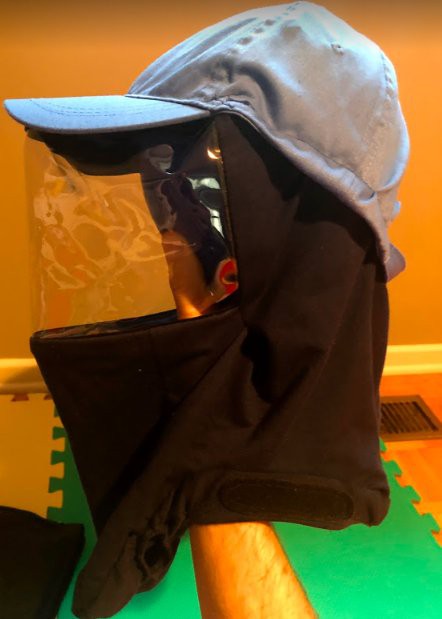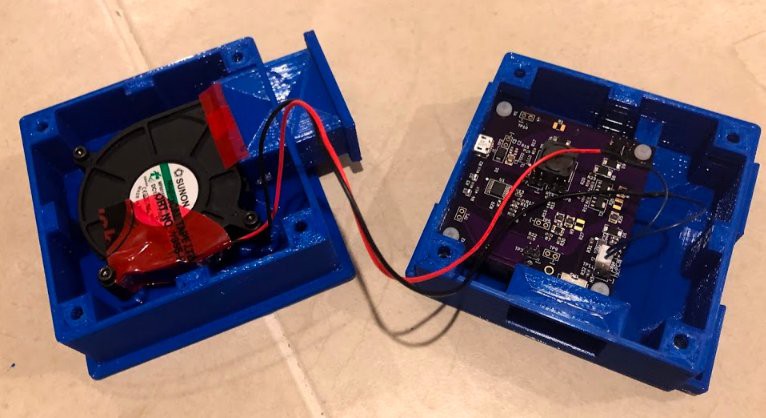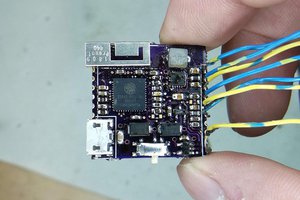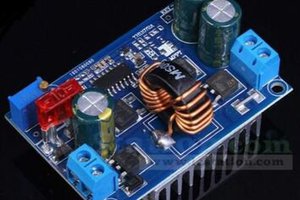
Above is the modified hat. I made a cloth cover, with a clear piece of vinyl to attach to the hat. When the user wears the hat, they can see out and people can see the user's face. It also means you can't touch your face. The cloth cover is kind of a like a reverse t-shirt. You can stretch it around your head and it holds snug around your neck.
Here is a view of the side.

The small opening at the bottom left is where the fan module attaches (this has elastic to stretch around the flange of the exhaust to hold it in place). The fan module fills the hat/cloth with clean air, and the odd shape at the bottom allows the user to move their head up and down. There is no hose - the air is directed at the user's face directly from the fan.
To carry the weight of the fan module (not super heavy, but you don't want to burden the neck with added weight), I sewed up a vest made of plastic screen. It is sturdy, and breathes.

What is nice about this arrangement is that at the end of the day, you can put everything in the wash (the hat was a budget hat that is washable).
Here is the fan assembly module. This picture shows the air intake at the center, and the exhaust on the left. Both the intake and exhaust have a flange. The exhaust flange pushes through the hat assembly. The intake flange is used to hold a mask over. You drape the mask over the flange, and secure in place with an elastic. If the fan fails for whatever reason, then you can take the mask off and wear as per usual.


Here is the module open, showing the blower and the PCB that I designed.

Here is the PCB I designed - it has a switching-type NiMH charger, as well as a DC-DC converter to keep the fan voltage at 5V. Here is the top layer (can't beat those KiCAD renderings!):


Here is the bottom layer (my preference is to make the WRL blocks simple and transparent):


Now, I'm not going to win an award for a NiMH charger, but let me explain why I went with NiMH. 1) NiMH batteries are pretty darn cheap (a certain store will typically stock 100s of 4-packs) 2) I like that NiMH are a touch safer for DIY. 3) I know you only get 500~1000 charges, but I'm an optimist, so I hope that is all the charging cycles we will need for this pandemic.
The switching charger is based on a DS2712, and was a touch over-designed so nothing gets over 28C while charging at 400 mA. The DC-DC converter is a XCL103D503CR-G (I can't get over how small this thing is!). I elected for parallel charging, and then diode connected the batteries to the DC-DC converter. Not the most efficient, but the Schottky diode drop means that the batteries reach 1.0V, and then the converter shuts down, preventing over-dishcharge. I also Schottky connected the 5V USB to the DC-DC converter, so that the batteries can be charged, and the DC-DC converter receives the USB voltage to run the fan. The fan draw is about 30 mA at 5V so I stay under 500 mA total.
The pack can power the fan for 11 hours...not bad. This would easily let you put in a day at work, and charge at night.

 Jarrett
Jarrett

 Samuel
Samuel
 Andrey V
Andrey V